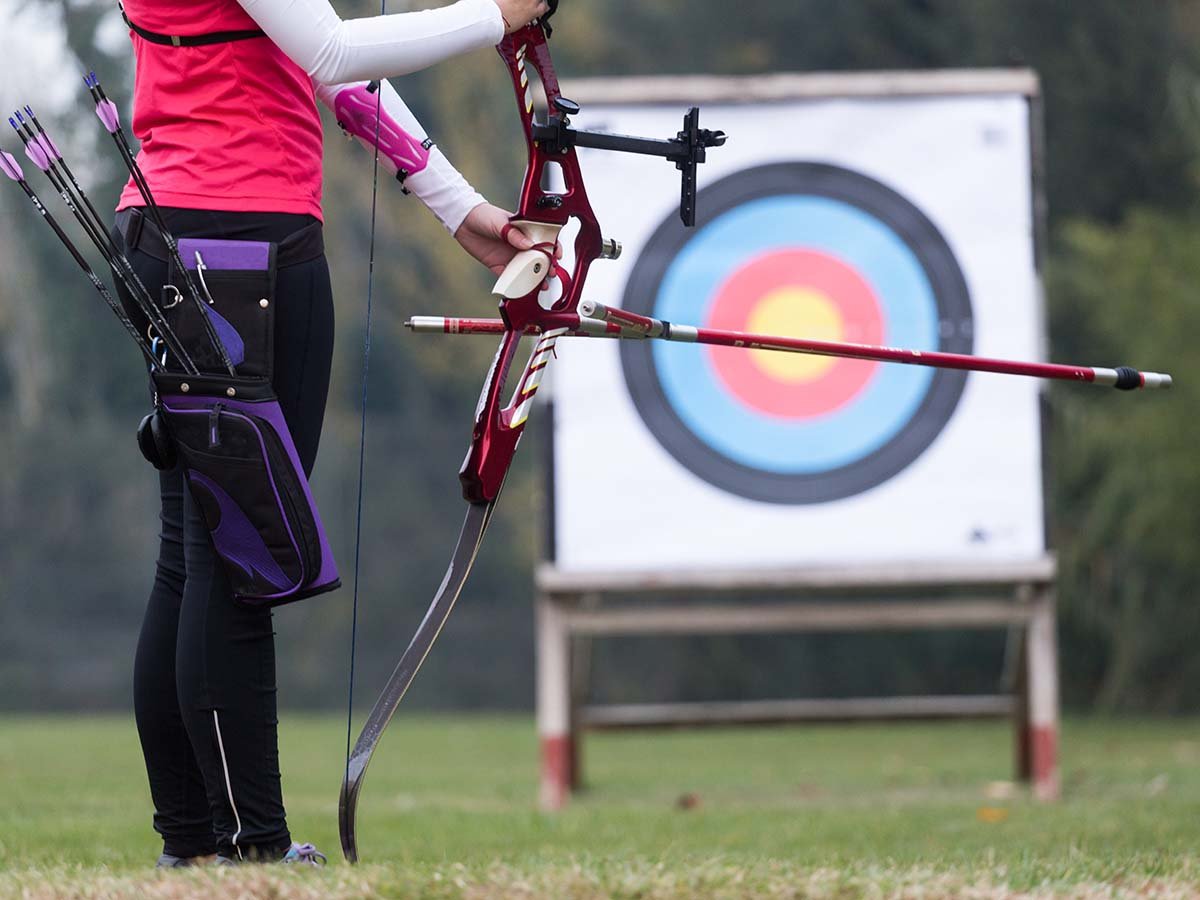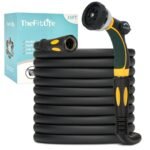Introduction To Archery for Beginners
If you’re an archery beginner, whether you are interested in archery for recreation, sport, or hunting, it is important to learn as much as you can about the topic. Archery is a sport that has been around for centuries, and it is still enjoyed by people all over the world today.
In this article, we will discuss the basics of archery and answer some of the most common questions people have about the sport.
Check out our article on Best Beginner Bow for Beginners
History of Archery
Archery is one of the oldest sports in the world, with evidence of its practice dating back to the Stone Age. Even in ancient times, archers were highly respected for their skill and accuracy.
The sport can be traced back to ancient Egypt, where it was used for both hunting and warfare. In China, archery was an important part of military training, and in Japan, it was used as a form of ritualized combat.
Today, archery is practiced all over the world by people of all ages and abilities. It remains a popular pastime for both recreational and competitive shooters. Archery offers a unique challenge that requires both physical and mental skills.
Benefits Of Archery
Archery is a challenging and fun sport that can be enjoyed by people of all ages
Archery is a challenging and fun sport that can be enjoyed by people of all ages. It is a great way to get outside, enjoy the fresh air, and spend time with friends or family. For those looking for a new hobby, or simply something to do on a sunny day, archery is a great option.
In addition to being fun, archery also provides a great workout. In order to be successful, archers must possess strength, dexterity, and precision. They must also be able to control their breathing and focus their thoughts.
The act of drawing and releasing an arrow requires significant arm and shoulder strength, and improved muscle tone is one of the many benefits of taking up the sport. Archery can also help improve coordination and focus, making it a great activity for kids as well as adults. So whether you are young or old, big or small, there is a place for you in the world of archery.
Archery can be practiced indoors or outdoors
Archery is a sport that can be enjoyed both indoors and outdoors. When practicing outdoors, archers can take advantage of natural features such as trees and bushes to provide cover from the wind. They can also use the terrain to their advantage, using elevation changes to create strategic shooting positions.
Indoor ranges, on the other hand, offer a controlled environment that can be ideal for honing one’s skills. Most indoor ranges have electronic scoring systems that provide instant feedback, making it easy to track progress and identify areas for improvement.
Whether practice takes place indoors or outdoors, archery is a sport that can be enjoyed by people of all ages and skill levels.
There are many different types of archery, including target shooting, field archery, and 3D archery
There are many different types of archery, each with its own unique set of rules and equipment. Some are meant to be played mostly indoors and some are meant to be played outdoors. Of course, you can modify almost any type of archery to be able to play both indoors and outdoors.
Target shooting is the most popular form of archery and involves shooting at stationary targets from a set distance.
Field archery is another common form of the sport and involves shooting at targets placed at various distances in an outdoor setting.
3D archery is a relatively new type of archery and involves shooting at life-size targets that are placed in a natural setting.
Whether you’re interested in competitive shooting or simply enjoying the challenge of hitting a moving target, there’s a type of archery that’s right for you.
Here’s one of the best archery targets on Amazon
Archery is a great way to improve your hand-eye coordination and aim
Archery is a great way to improve your hand-eye coordination and aim. By practicing regularly, you can train your brain and body to work together more effectively.
The key is to focus on your target and keep your arm and hand steady as you release the arrow. You may also want to try different grip styles and shooting positions to find what works best for you.
With practice, you’ll be surprised at how quickly your skills improve. In addition to improving your aim, archery can also be a great way to relieve stress and have fun. So why not give it a try?
Archery can also help you to develop discipline and patience
Archery is a great sport for developing discipline and patience. It takes a lot of practice to become a good archer, and even the best archers miss their target occasionally. This can be frustrating, but it’s important to maintain focus and keep practicing.
The more you shoot, the better you’ll become at reading the wind, judging distance, and making small adjustments to your aim.
In time, you’ll develop the discipline and patience needed to consistently hit your target. And who knows, you might even enjoy competitive archery or start hunting with a bow and arrow.
So if you’re looking for a challenging and rewarding activity, consider taking up archery. You might just surprise yourself with what you’re capable of.
Types of Archery
Archery is a great way to spend time with friends or family, and it is also a great way to get exercise. Whether you want to compete in tournaments or just shoot for fun, there is a type of archery that is right for you.
Recreational Archery
This is the most popular type of archery. It can be done indoors or outdoors, alone or in groups, and does not require any special equipment or clothing. All you need is a bow and arrows.
You might want to have a target to shoot but it isn’t required. You can shoot at cans, bottles, or a real target with rings for scoring. Please don’t be destructive to nature. Clean up after yourself. Make sure you and others are safe around all shooters.
Target Archery
Target Archery is done with a recurve or compound bow, and the target is a circular one with ten rings for scoring. The object is to get your arrows as close to the center of the target as possible and thus the highest score.
This is also Olympic Style archery using recurve bows strictly.
3D Archery
This is a type of archery that is done with a compound bow and 3-dimensional targets. The target is a life-size model of an animal, and the object is to hit the vital organs. It’s basically mock or practice bowhunting. This type of archery can be done indoors or outdoors.
Field Archery
This is a type of archery that is done with a recurve or compound bow. This type of archery is similar to target archery, but the targets are a series of small targets placed at different distances and in different positions, so you have to walk around to shoot them at various angles. This makes it more like a real hunting situation. This type of archery can be done indoors or outdoors.
Bowhunting
This is the type of archery most people think of when they think of hunters with bows and arrows. It is done with a compound bow, and the target is an animal. The object is to kill the animal as humanely as possible with one shot, so accuracy is very important. This type of archery can be done only outdoors.
Bowfishing
This is a type of fishing where you use a special bow and arrow to shoot fish. The object is to either kill the fish or just stun it so you can reel it in. This type of archery can be done only outdoors.
Physics Of Archery
The Physics Of Shooting An Arrow
When you shoot an arrow, four forces are acting on it: gravity, drag, lift, and thrust.
- Gravity is the force that pulls the arrow down toward the ground. The faster the arrow is moving, the more gravity affects it.
- Drag is the force that opposes the forward motion of the arrow. Drag increases as the speed of the arrow increases.
- Lift is the force that opposes gravity. Lift is created by the aerodynamic forces acting on the arrow.
- Thrust is the force that propels the arrow forward. It is created by the action of the bowstring on the arrow.
When you release the arrow, thrust, gravity, drag, and lift all act on it at the same time. The amount of each force depends on the speed of the arrow and its mass. To maximize the amount of kinetic energy, you need to release the arrow as quickly as possible while still maintaining good form.
How the Bow and Arrow Work Together
The physics of shooting an arrow with a bow is a complex subject, but understanding the basics can help you shoot better. By understanding how the bow and arrow work together, you can maximize the amount of kinetic energy and shoot more accurately.
The Bow And Bowstring
A bow is a simple machine made up of two levers. The upper lever is the bowstring and the lower lever is the bow itself. When you pull back on the bowstring, you store energy in the form of elastic potential energy.
This potential energy is converted to kinetic energy when you release the arrow. The amount of kinetic energy depends on how much potential energy you stored and how efficiently you converted it. To maximize the amount of kinetic energy, you need to pull the bowstring back as far as possible while still maintaining good form.
The Arrow
The arrow is also a lever, with the center of gravity located in the middle and the aerodynamic forces acting on the front and back. The aerodynamic forces cause the arrow to spin, which stabilizes it in flight. The faster the arrow is moving, the more stable it is.
When you release the arrow, all of the energy stored in the bow is transferred to the arrow. The kinetic energy of the arrow causes it to rotate and also makes it fly straight.
The amount of kinetic energy depends on the speed of the arrow and its mass. In order to maximize the amount of kinetic energy, you need to release the arrow as quickly as possible while still maintaining good form.
Archery Equipment
Bows are made up of a string attached to elastic limbs that store mechanical energy supplied by the user drawing the string. Bows may be classified as those drawn by pulling the string directly and those utilizing a mechanism to draw the bowstring.
Bow Types
Longbow
The longbow is a simple bow with no pulleys or levers. It is made up of a single piece of wood, and the string is attached directly to the ends of the bow. The longbow is held vertically when shooting, and the arrow is drawn back by pulling on the string with both hands.
This is the most traditional of all bows. The longbow was also used in warfare with large numbers of archers shooting arrows at their enemy.
Recurve Bow
A recurve bow is a type of bow that has its limbs curving away from the archer when unstrung. A recurve bow stores more energy than an equivalent straight-limbed bow, giving more speed to the arrow. It makes use of the archer’s muscles more efficiently.
In addition, the increased efficiency means that a recurve bow can be smaller and lighter than a straight-limbed bow while still delivering the same power.
The compact size also makes it easier to carry in the field, and its sleek design means that it is less likely to snag on vegetation. For all these reasons, the recurve bow is an excellent choice for anyone who wants a powerful and efficient bow.
Compound Bow
A compound bow is a bow that uses pulleys and cables to create a mechanical advantage when drawing the bowstring. This allows the archer to apply less force when drawing the bow, which in turn makes it easier to hold the bow at full draw for a longer period of time.
In addition, the use of pulleys and cables also allows the compound bow to be much more compact than a traditional recurve or longbow. As a result, compound bows are often used by hunters who need to be able to move quickly and quietly through the woods.
In addition, many competitive archers also prefer compound bows because of the increased accuracy and shooting speed that they offer.
Arrow Types
Carbon Arrows
Carbon arrows are made from carbon fiber, which is a strong and lightweight material. Carbon arrows are very popular with both recreational and competitive archers because they offer excellent accuracy and durability. In addition, carbon arrows are also less likely to break than aluminum or wood arrows.
Aluminum Arrows
Aluminum arrows are made from aluminum alloy, which is a strong and lightweight material. Aluminum arrows are popular with both recreational and competitive archers because they offer excellent accuracy and durability. In addition, aluminum arrows are also less likely to break than wood arrows.
Wood Arrows
Wood arrows are made from various types of wood, such as cedar or pine. Wood arrows are popular with traditional archers because they are relatively inexpensive and easy to make. In addition, wood arrows offer a unique look that many archers find appealing.
Fletching
Fletching is the material, usually feathers or vanes, that is attached to the shaft of an arrow to stabilize flight. The three most common types of fletching are plastic vanes, feathers, and spin wings.
Plastic Vanes
Plastic vanes are made from a variety of materials, such as polyethylene or polypropylene. Plastic vanes are popular with both recreational and competitive archers because they offer excellent stability and durability. In addition, plastic vanes are also less likely to be damaged than feathers or spin wings.
Feathers
Feathers are made from the feathers of birds, such as ducks or geese. Feathers are popular with traditional archers because they offer a unique look that many find appealing. In addition, feathers are also less likely to be damaged than plastic vanes or spin wings.
Spin Wings
Spin wings are made from a variety of materials, such as polyester or nylon. Spin wings are popular with both recreational and competitive archers because they offer excellent stability and durability. In addition, spin wings are also less likely to be damaged than feathers or plastic vanes.
Bowstring:
The bowstring is the part of the bow that propels the arrow. Bowstrings are typically made from a variety of materials, such as nylon, Dacron, or Kevlar. In addition, many bowstrings also contain a material called serving, which helps to protect the bowstring from wear and tear.
Protective Gear
Arm Guard
An arm guard is a piece of protective gear that is worn on the forearm to protect the archer from the string of the bow. Arm guards are typically made from a variety of materials, such as leather, nylon, or plastic.
Finger Tab
A finger tab is a piece of protective gear that is worn on the finger to protect the archer from the string of the bow. Finger tabs are typically made from a variety of materials, such as leather, nylon, or plastic.
Quiver
A quiver is a container that is used to hold arrows. Quivers are typically made from a variety of materials, such as leather, nylon, or plastic.
Release
A release is a device that is used to hold the bowstring in place. Releases are typically made from a variety of materials, such as aluminum, brass, or stainless steel.
Target
The target is the object that the archer is trying to hit. Targets are typically made from a variety of materials, such as cardboard, foam, or straw.
Stabilizers
Stabilizers are devices that are attached to the bow to help stabilize the shot. Stabilizers are typically made from a variety of materials, such as aluminum, carbon fiber, or plastic.
Here are some fantastic archery accessories that you might like from Amazon.
Learn How To Shoot A Bow And Arrow Including Aiming
If you are new to archery, it is important to start with how to hold and shoot a bow and arrow. It is also important to practice your aim. Once you have mastered the basics, you can move on to more advanced techniques.
Learn Basic Archery Fundamentals Of Form
Archery’s foundations are the building blocks of consistent shooting. Whether you’re drawing on a deer or competing in a league, these fundamentals will help you make crucial shots.
The most important thing in archery is form. Form refers to the way you hold and shoot the bow. There are many different techniques, but the most important thing is to be comfortable and have a steady hand.
The following are the fundamentals of archery: stance, grip, posture, bow arm, anchor point, release, and follow-through. You’ll become an excellent marksman if you master archery’s fundamental principles.
Stance
Stand with your feet shoulder-width apart or a little farther apart. You may take a closed stance, which aligns your toes evenly; or an open stance, which sets your front foot back slightly. Personal preferences determine your stance, but it should remain consistent for each shot.
Grip
The grip is the main physical point of contact between you and your bow. That’s why accuracy is so important. A proper grip must be consistent and provide little torque. To obtain that ideal grip, place the bow’s grip between your lifeline and thumb pad. Your knuckles should be at a 45-degree angle, and your fingers should be relaxed.
Posture
Your posture plays a vital role in archery because it supports the weight of the bow. Maintain a tall, erect posture with your shoulders rolled back. Let the bow’s weight hang from your shoulder muscles without putting strain on your neck or elbow. This will help you shoot for long periods without tiring.
Bow Arm
Your bow arm should be parallel to the ground, and your elbow should be in line with the riser (the center of the bow). The muscles in your back and shoulder will support the weight of the bow, so you can maintain a consistent draw throughout your shot.
Anchor Point
Your anchor point is the spot where you place your hand to draw the bowstring. This spot will be different for everyone, but it should be consistent for each shot. To find your anchor point, hold the bow in your non-dominant hand and raise it to eye level. Then, extend your draw arm so that the string runs across the middle of your face.
Release Mechanism
Your release is the mechanism you use to release the string and send the arrow flying. Releases come in two main types: mechanical and finger. Each type has its own advantages and disadvantages, so it’s important to choose the right one for you.
Mechanical releases are easier to use and provide a more consistent release, but they can be difficult to draw.
Finger releases are more challenging to use, but they’re smaller and lighter, making them ideal for hunting.
Follow-Through
After you release the string, it’s important to follow through with your shot. This means keeping your arms in the same position until the arrow hits the target. If you drop your bow arm or move your head, you will throw off your shot.
Steps To Aim And Shoot A Bow And Arrow
- The first step is to nock the arrow. This means placing the arrow on the string, ready to be fired.
- The second step is to draw the string back. This is done by gripping the bow with your non-dominant hand and pulling the string back with your dominant hand.
- The third step is to aim. This can be done by using a sight or by using the “anchor point” method (placing your pointer finger on the corner of your mouth and aligning the string with the first two fingers).
- The fourth step is to release the arrow. This is done by simply letting go of the string with your dominant hand.
Here’s a link to some fantastic archery aiming devices from Amazon.
More On Aiming
There are two main ways to aim a bow and arrow: using a sight or using the “anchor point” method. Here’s a brief explanation of both types of methods:
- Anchor Point Method The anchor point method is less accurate, but it’s easier to use in low light conditions. To aim using the anchor point method, place your pointer finger on the corner of your mouth and align the string with the first two fingers. Then, release the arrow.
- Sight Method The sight method is the most accurate way to aim, but it can be difficult to use in low light conditions. To aim using the sight method, line up the sight with the target and release the arrow.
Both methods require practice to master, so it’s important to experiment and find the method that works best for you. No matter which method you use, it’s important to practice regularly to maintain your skills.
Hunting Using Bow And Arrows
Why use a bow and arrow to hunt?
For many, it’s the challenge. It takes a great deal of practice to become proficient with a bow and arrow, and that makes the successful kill all the more rewarding.
Another reason people enjoy hunting with bows is that it gets them closer to the animals they’re pursuing. To be successful, hunters must get close to their prey, within 30 yards or so. This proximity provides an up-close-and-personal experience that many find exhilarating.
Of course, not everyone enjoys the challenge of bowhunting or the closeness it entails. Some people prefer to hunt with firearms because it’s easier and they can stay farther away from the animals. But for those who enjoy the challenge and intimacy of bowhunting, there’s nothing quite like it.
The benefits of hunting with a bow and arrow.
For one, it is great exercise. It is also a very challenging way to hunt, as you have to be much more stealthy and get closer to your prey than you would if you were using a rifle.
Additionally, bowhunting often results in a cleaner kill, as the arrow causes less damage to the animal than a bullet would.
Is bowhunting effective in hunting?
Yes, it can be if done correctly. As with any type of hunting, success depends on many factors, including the animal’s behavior, the terrain, and the hunter’s skill level. That said, bowhunting can be an effective way to harvest game.
How to get started in bowhunting?
If you’re interested in bowhunting, the best way to get started is to take a beginner’s class. These classes will teach you the basics of archery, safety, and hunting. Once you have the basic knowledge, you can start practicing and honing your skills. If you don’t want to take a class, there are many resources available online and in print that can teach you the basics of bowhunting.
Here’s a very nice Hunting Bow Set for Beginners from Amazon at a reasonable price.
Tips For Beginner Bowhunters
If you’re thinking about giving bowhunting a try, here are a few tips to help you get started:
- Choose the right equipment. It’s important to have the proper equipment if you want to be successful in bowhunting. Make sure you buy a quality bow and arrows and practice with them before heading out into the field.
- Learn the basics. As with any new activity, it’s important to learn the basics before getting started. You can do this by taking a class, reading books or articles, or watching videos.
- Practice, practice, practice. The more you practice, the better you’ll become at bowhunting. Set up a target in your backyard and take some time to perfect your aim.
- Be patient. Patience is key when bowhunting. You may not get a shot off every time you go out, but if you’re patient and persistent, eventually you’ll be successful.
- Have fun. Remember, bowhunting is supposed to be enjoyable. Don’t put too much pressure on yourself, and take the time to enjoy being in nature.
With a little practice, patience, and the right equipment, you can be successful in bowhunting.
List Of Other Archery For Beginners Articles
- Guide: Best Archery Bows For Beginners?
- How to measure draw length and draw weight for an archery bow?
- How Much Does It Cost to Start Archery? [Absolutely Lowest]
- What Is A Longbow? (Archery)
- What Is A Recurve Bow? (Archery)
- What Is A Compound Bow? (Archery)
- Traditional Archery For Beginners: What You Need To Know [GUIDE]
- Fishing With A Bow [Ultimate Bowfishing Guide]
- Super Beginner Guide To The Best In Archery Gear [Our Number One Choices Only]
Conclusion To Archery For Beginners
Archery is a great way to get outside and enjoy the fresh air. Archery is very relaxing and almost meditative. Whether you’re interested in hunting or simply want to hit a target, archery is a great activity for all ages and skill levels. It’s very easy to learn and practice.
It’s a challenging sport that requires skill and practice to master but is easy to learn becoming one of the fastest-growing sports.
It’s also therapeutic relief for stress or anxiety caused by daily obligations such as work pressure. There are no restrictions when it comes to learning archery skills outside under blue skies on your next adventure weekend get-away! It’s fun!
Grab a bow and a quiver full of arrows, put on some sunscreen, then head out into nature…you’ll thank me later! So, get going today!

Meet Kevin Goodell, your outdoor adventure coach! With a passion for nature ignited in childhood, Kevin brings a wealth of experience and expertise to simplify tough outdoor skills. As a U.S. Army veteran and former Sergeant, he has honed his leadership and teamwork abilities while developing a deep love for the great outdoors.
Kevin’s dedication to outdoor activities spans biking, birdwatching, national park trips, and archery/golf. With his friendly and approachable demeanor, he is committed to guiding individuals of all ages and skill levels towards unforgettable outdoor experiences.
Harnessing his extensive knowledge and personal achievements, Kevin is your go-to resource for learning and enjoying various outdoor pursuits. Whether you seek thrilling adventures or serene nature escapes, Kevin’s professional yet friendly approach will ensure an engaging and informative experience. Embark on your next outdoor adventure with Kevin Goodell and embrace the beauty of nature like never before.






